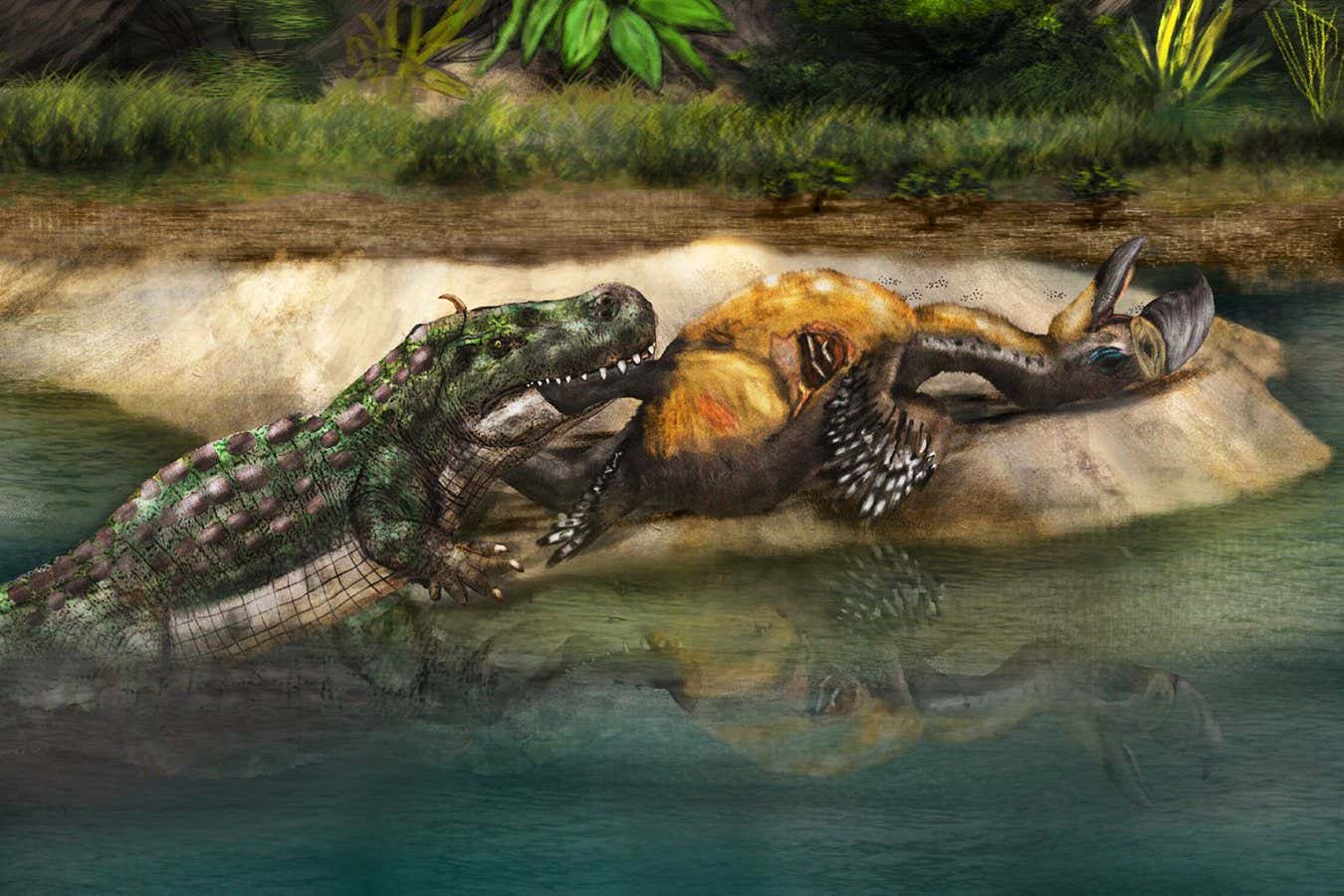Now Reading: Giant Caimans May Have Outmatched Ancient ‘Terror Birds
1
-
01
Giant Caimans May Have Outmatched Ancient ‘Terror Birds
Giant Caimans May Have Outmatched Ancient ‘Terror Birds

Speedy Summary
- A 13-million-year-old leg bone of a flightless “terror bird” was discovered in Colombia’s Tatacoa desert.
- The fossil shows four deep tooth marks, likely from a giant caiman species called Purussaurus neivensis, an estimated 4.5-meter-long crocodilian predator.
- Terror birds (phorusrhacids) were top predators with hatchet-shaped beaks, sharp claws, and stood up to 2.5 meters tall.
- Researchers suggest the bird may have either been preyed upon or scavenged by the caiman near water bodies in South America’s ancient Pebas wetland ecosystem.
- Scanning analyses confirmed the marks resemble crocodilian teeth impressions rather than mammalian gnawing traces,which ruled out other predators as suspects.
- Scientists noted no signs of healing around the bite marks on the fossilized leg bone,confirming that this encounter was fatal for the bird whether or not it was alive at that time.
- Similar tooth-mark evidence on terror bird fossils has been found before, revealing how predation pressures blurred clear ecological roles in prehistoric food chains.
Image: Artist’s impression of an ancient encounter between a giant terror bird and caiman (Credit: Julian Bayona Becerra).
campaign=RSS%7CNSNS&utmsource=NSNS&utmmedium=RSS&utmcontent=home”>read More
Stay Informed With the Latest & Most Important News
Previous Post
Next Post
Loading Next Post...

























